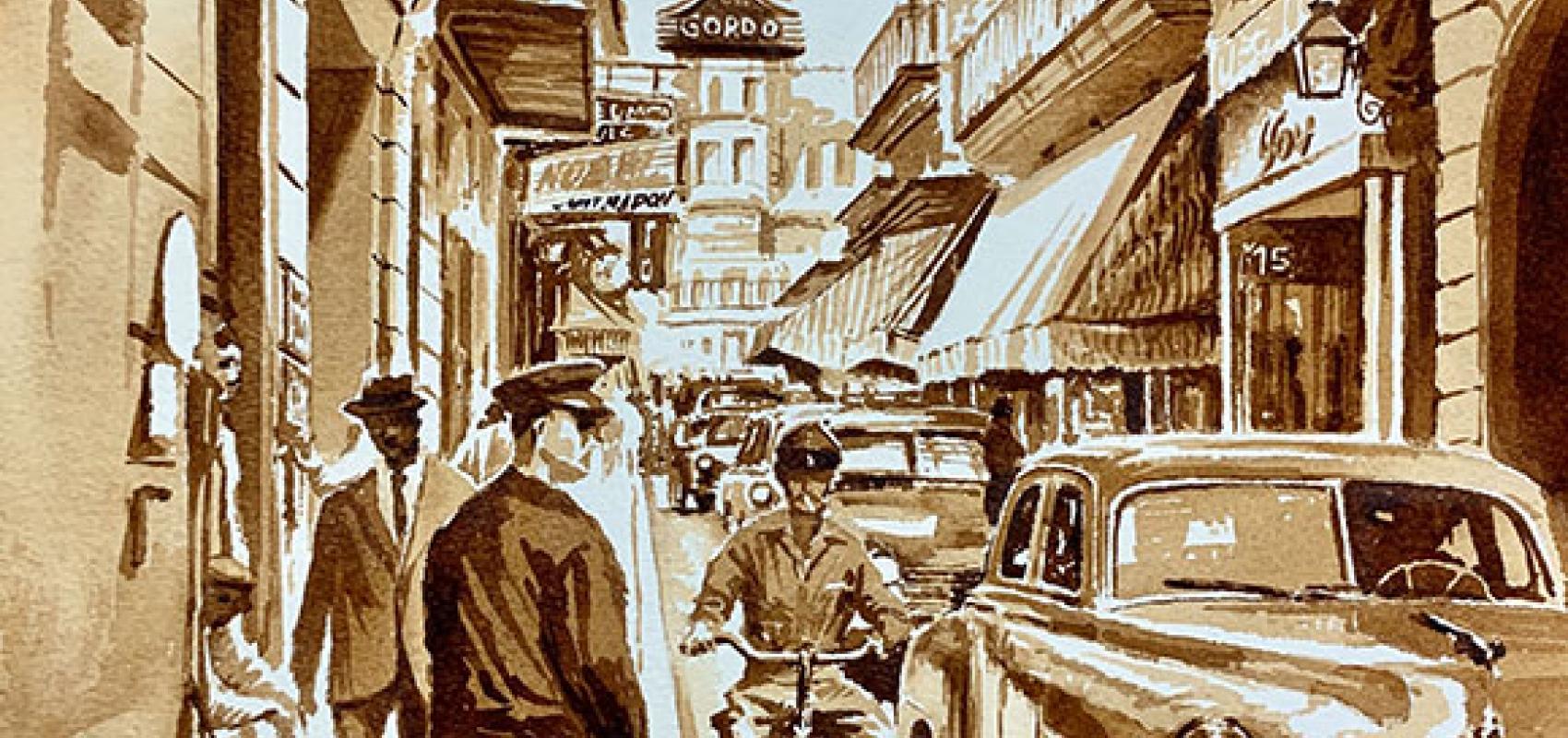Luis Enrique Camejo is a man of romance and I do not mean that in the most erotic and sensual sense of the word, but I perceive him as an artist who brings back to us the heartbeat of the city, of man and, of course, of the world through his watercolors.
Camejo, as he is well known in the artistic world, is one of the most prestigious creators due to the quality of his painting, in the first instance. We are talking about a creative work that has not declined over time and that seems to be constantly renewed.
He finds inspiration in the most everyday and simple scenes, those that we overlook because of their continuous and repeated presence in our daily lives. Others who share the same profession, perhaps, may think "I won't succeed like this", "I need to do something more attractive".
Luis Enrique, however, has also been able to find in historical scenarios and landscapes another fascinating way for his figuration. This can be seen in his most recent exhibition Coffee Time, at the Collage Habana gallery.
His work calms and harmonizes, even though the waves of the sea crash into his pieces with an indestructible force on the Havana Malecon and Camejo himself assures that some of his best pieces are the result of torment.
Camejo has shown us, from his vision, landscapes of Germany, Miami, the capital of Cuba and other places. He has had the skill to capture unique moments that will never be repeated in the same way.
Among his great successes stands out the portrayal of the city and its soul, either from its buildings, its people and the actions that we can see in each painting.
We give the floor then to the protagonist of so many emblematic watercolors.
The city as a symbol of man has been one of the constants in your work. What motivates you to recreate this type of landscape?
That is the neuralgic point of my work, the city; the city as a symbol of the human being. I think that between 75% and 80% of the population lives in the city, so all philosophy, art, thought is generated in the city. The urban in human thought is implicit.
I work a lot on Havana because it is where I live, where I create, where I spend my nights and days, but I also represent the places where I travel and where I have made contacts, where I have lived in certain periods of time. In the end, everything has the same treatment, that is, it is as if it were the same city.
The city can be a very developed or third world place, but in the end it has the same patterns, the same ideas are repeated, the relationship of man with the traffic, with the noise, with the signage, with the architecture.
What makes you choose watercolor as one of your favorite techniques?
Watercolor is the basis of my work, first of all, because of the very concept that derives from the material. Watercolor is a little bit of pigment with all its ingredients. With very little you can do a lot. With a drop of paint you can make a watercolor, that is very striking. From the simplest things come the most profound things, that happens in literature and it also happens in life.
Watercolor has that magic as a material, but it also has it because of what it represents when it is finished, that is, watercolor has that thing that is transparent, everything is achieved by transparency, by layers. Life has layers and you can't hide anything.
You don't add white in watercolor, and you have to have a knowledge, a concentration, I don't know what it is to know that it's going to be white. For example, I paint a picture with oil or acrylic and if it looks bad I cover it up, I throw something at it, but with watercolor if it looks bad, it looks bad. You need to be very sure of what you want to do. It is almost never what I want, but other things come out that I like, sometimes more, sometimes less, but that's where the idea comes from.
In Maxima we can tell you that the result is fascinating...
My oil paintings are influenced by watercolor. Rather than using a palette in the conventional way, what I do is to prepare the pigment with solvent in a pot, that is, my paintings owe a lot to watercolor, because it has this transparency, the layers.
Your paintings emanate an incredible peace, a sense of tranquility and balance. How does Camejo feel it?
I don't know, sometimes I am tormented and many of the works I have liked the most come out of torment, desperation, the need to do something, but they are made from introspection.
Many of the views of the paintings are like imagining myself inside a car, it is raining and I am seeing the city through a car with wet glass. It has that thing of recollection, a little existentialist posture of seeing life without including yourself in it, you are observing what is happening as if you were seeing everything through a filter.
It is a moment of a frozen image in time to stop and analyze. It's a game very similar to photography.
Photography is an uncatchable moment, but its image contains a before and an after. The same thing happens in my painting. There is a before and an after.
Published 29/09/2021





